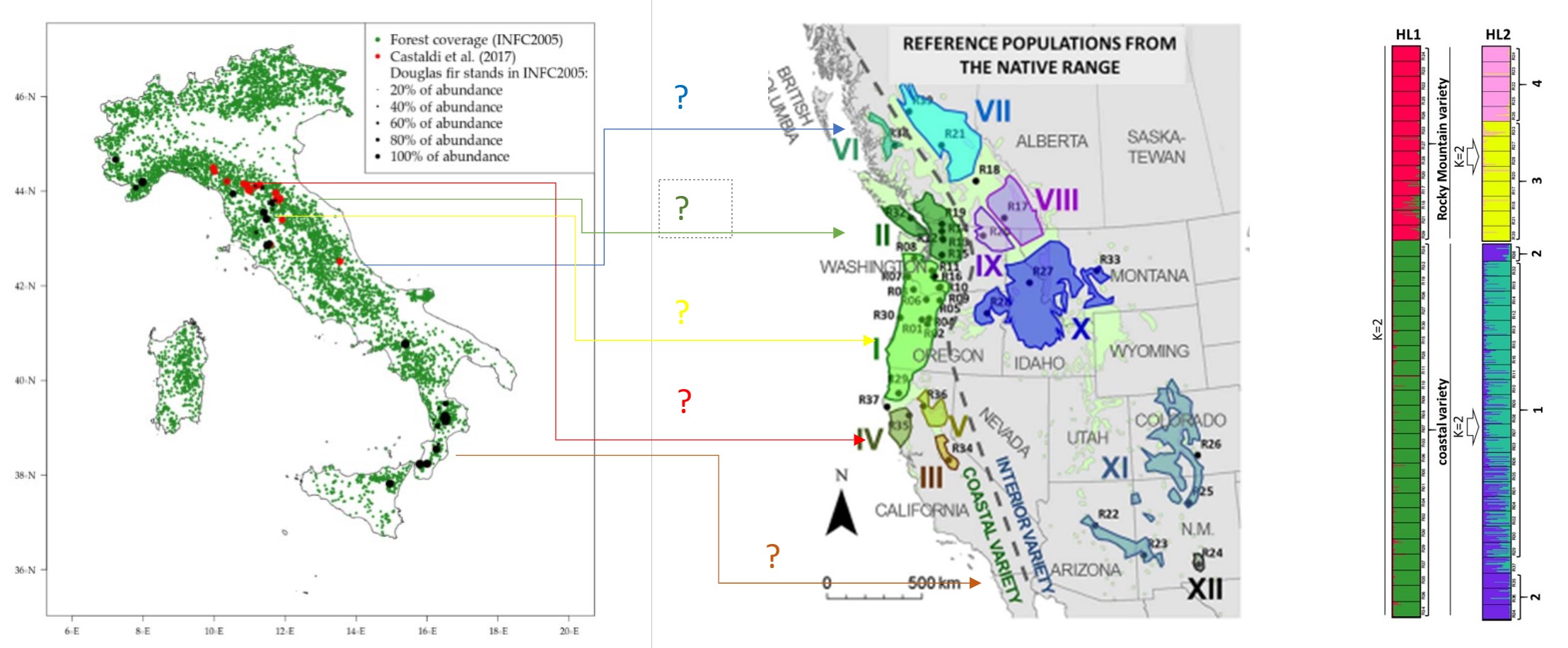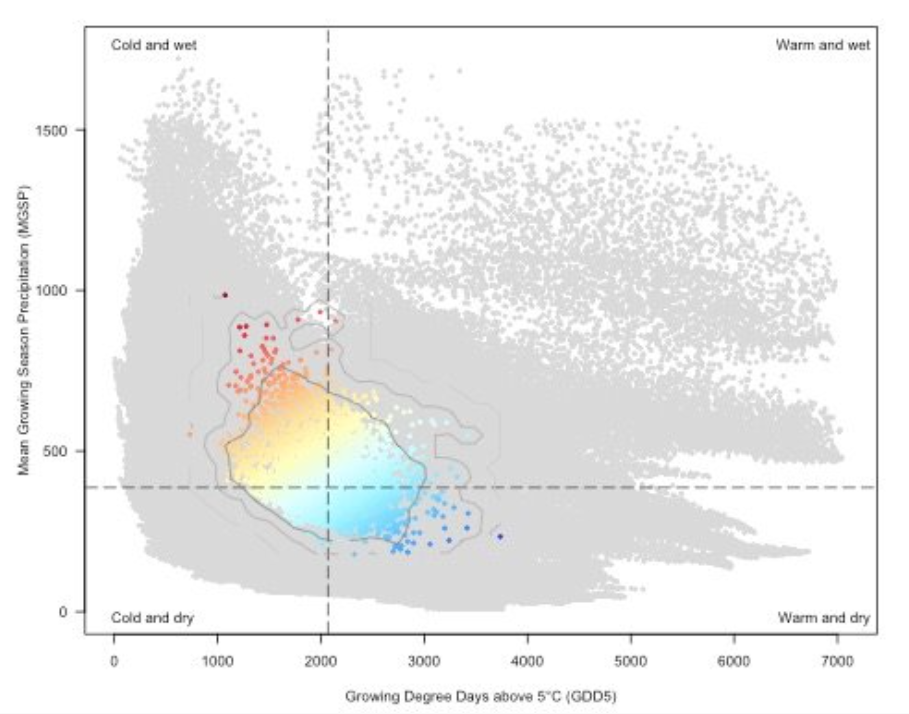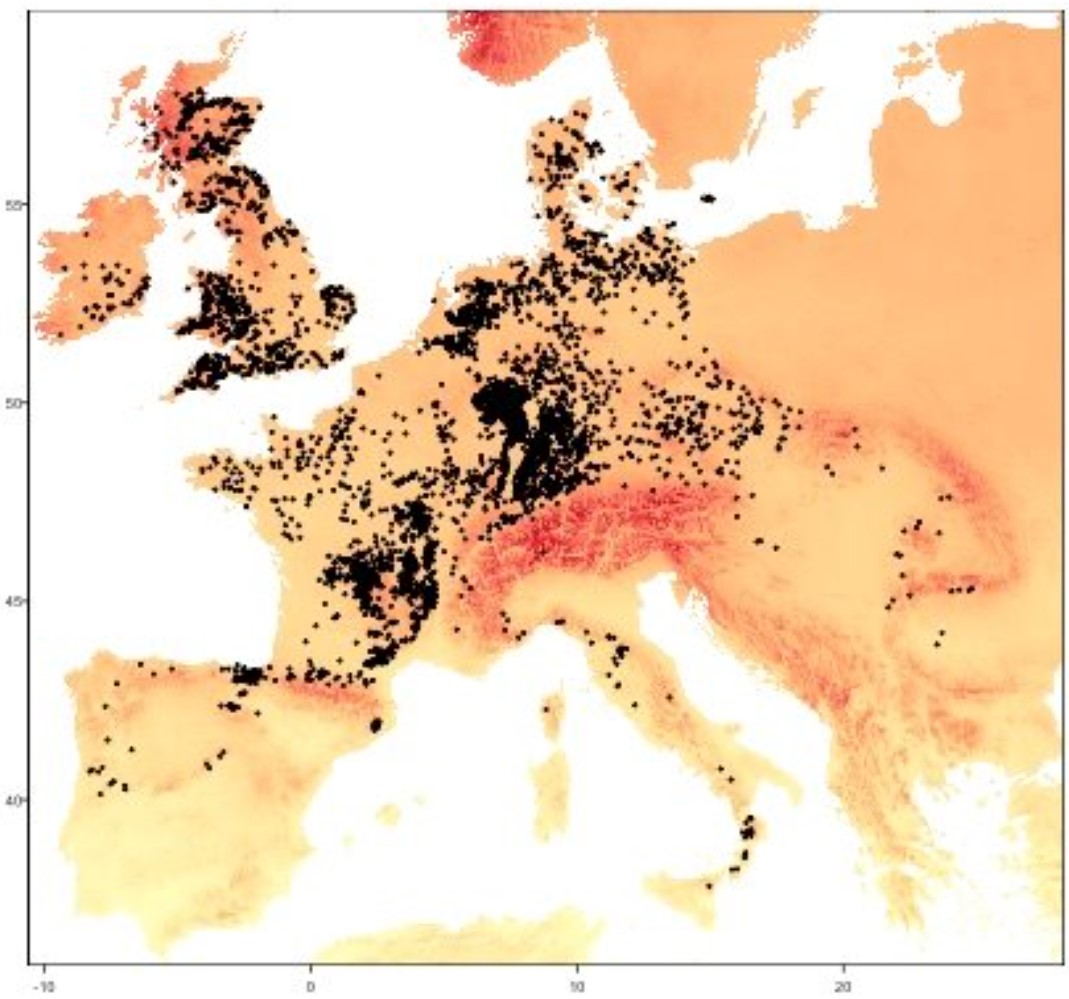
CONIFIR Project
Genetic origin and structural setting of Douglas-fir planted forests in Italy for their management, conservation and valorization
MUR-PRIN 2022 Project - Prot. 20225WRLS3

MUR-PRIN 2022 Project - Prot. 20225WRLS3
The aim of the CONIFIR project is to fill the existing gap of knowledge on the origin and the genetic characteristics of current Douglas-fir (Pseudotsuga menziesii Franco) stands in Italy by acquiring a structured set of spatial, molecular and structural data from Douglas-fir trees in Italy, which have been found in approximately 50 stands with a partial overlap between research plots (20 sites) and forest inventory plots (52 records) from North Calabria to Piedmont.
The origin and the genetic characteristics of current Douglas-fir (Pseudotsuga menziesii Franco) stands in Italy are in most cases unknown. On the other hand, Italy hosts the most sourthern stands in Europe, which can likely reflect local adaptation in relation to the current climate change, in particular regarding the water use efficiency.
Moreover, Douglas-fir is one of the candidate species to replace and/or complement Norway spruce plantations in central Europe, which are currently suffering from large insect infestation (e.g., Ips typographus) and drought. This makes the southerner stands of Douglas-fir in Europe an interesting seed source for reforestation of productive stands across Europe.

Geographic distribution of Douglas fir stands in Italy (left) and the species' native range (Western USA, Canada) with indications of different varieties (right). The origin of most Italian Douglas fir stands is unknown.

Distribution of Douglas fir sites in Europe based on Mean Growing Season Precipitation (MGSP, y-axis) and Growing Degrees days above 5 °C (GDD5, x-axis).
Through the genetic characterization of trees at the current stands and the climatic parameters at the current plantation sites, CONIFIR aims at modeling the Douglas-fir ecological niche of the different genetic provenances in Italy.
Moreover, simulations of different sampling schemes on genotyped trees will provide guidelines and best practices to be adopted for recovering the propagation material (seeds) from current populations, thereby preserving at the same time the highest genetic variation for next tree generations.
The main topics of the project are: Non-native tree species, Forest sampling, Phenotypic plasticity, Universal Response Function, Precision forestry, Genecology.
In the past, Douglas fir has been extensively planted across Northwestern and Central European countries. Several stands of unknown origin are also scattered also in Italy, Northern Spain and on the Carpathians.
As displayed in the map aside, the most sourthern plantations across Europe can be found in southern Italy (Calabria) and central Spain/Portugal, but few information on the origin and adaptation / acclimation of these stands to their local environment are available.
To this purpose, the CONIFIR project aims to delineate the habitat suitability and productivity of Douglas fir across Europe based on a modelling approach and using future climate scenarios.

Geographic distribution of Douglas fir stands in Europe.
3D reconstruction of the structure of the Douglas fir stand located in Frugnolo (Arezzo, Tuscany, Italy) based on ALS data (courtesy of N. Puletti, CREA-FL, Arezzo).
So far, the current structure of Douglas-fir stands after decades since their establishment has been poorly studied. Through the use of UAV (Unmanned Aerial Vehicles) and ALS data (Aerial Laser scanning), the 3D reconstruction and modeling will allow to study the structure of the Douglas fir stands across Italy and the intra- and inter-specific competition relationships, as well as their growth performance.